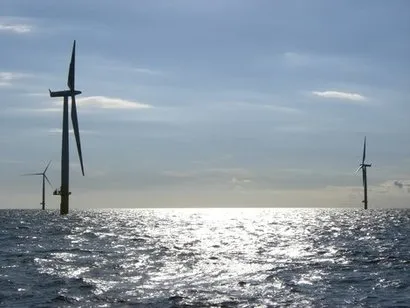Oil’s Demand Plunge Doing More Damage than The Price War
21 Mar 2020 by JAVIER BLAS
Imagine U.S. President Donald Trump makes a deal with Saudi Arabia and Russia to cut oil production. Envisage Washington, Moscow and Riyadh going big, each cutting by one million barrels a day. Bullish, right?
Now come back to the reality of today’s oil market, where demand is collapsing -- some traders say by 10 to 20 million barrels a day, or a fifth of global consumption -- as millions find themselves in lock-down or self-isolating, causing travel to grind to a halt.
“Demand has been decimated in the short term,” said Andy Hall, one of the most successful oil traders of his generation until he retired from day-to-day trading in 2017. It’s a widely held view among senior executives in the market.
Since dropping below $25 a barrel this week, an 18-year low, Brent crude has swung violently, with investors trying to assess the impact of OPEC+ output increases against falling demand due to measures to contain Covid-19. On four occasions in the past two weeks, Brent posted daily price swings of more than 10%.
Taking a snapshot of how much oil consumption is collapsing is impossible, but privately traders put the drop somewhere between 10 million and 20 million barrels a day, with some saying it may be falling even more. California alone, where authorities have just mandated a lock-down, accounts for 10% of U.S. total oil demand, and a huge 20% of jet-fuel consumption.
Even if demand recovers to normal levels by the middle of the year, 2020 is still on course to suffer the biggest decline in oil consumption since reliable records started in the mid-1960s. Until now, the biggest annual contraction was recorded in 1980, when it tumbled by 2.6 million barrels a day as the global economy reeled under the impact of the second oil crisis.
The drop in demand is a moving target as countries step up their measures to contain the pandemic. FGE, an oil consultant that was among the first to recognize the severity of the problem, warned clients in a note that 2020 average demand could plummet by 12 million to 20 million barrels a day in its worse-case scenario.
Even a smaller contraction would far outstrip any production cuts that the OPEC+ alliance discussed two weeks ago, when Saudi Arabia tried and failed to convince Russia to agree to a fresh 1.5 million barrels a day reduction. Even if Texas was to cut production, as some regulators are publicly arguing for, it wouldn’t make a huge difference.
Output cuts “wouldn’t prevent an unprecedented inventory build over the next months,” said Damien Courvalin, an oil analyst at Goldman Sachs Group Inc., adding that oil prices are still likely to drop toward levels that force some producers to shut down their wells.
Oil traders and analysts see signs of surpluses building everywhere in the petroleum supply chain: jet-fuel is going unsold at major airports; traffic congestion has vanished from Seattle to Milan, indicating that fewer people are driving, and therefore gasoline demand is down sharply. Factories are closing as their just-in-time supply-chains are disrupted, reducing diesel buying.
In a striking example of the impact on traveling, Deutsche Lufthansa AG, Europe’s biggest airline, is planning to ground 700 out of its 763 aircraft in the near term, shrinking the flight schedule to a level last seen in 1955.
The biggest fuels pipeline connecting the U.S. Gulf Coast oil refining hub with buyers on America’s East Coast -- including Atlanta, Philadelphia and New York -- is reducing flows by 20% due to lack of demand. “We recognize the impact that COVID-19 is having on product demand,” the company that operates the Colonial pipeline told customers.
“Arguments that prices are already too low and positioning is extremely short are misplaced because what the market is experiencing now is unprecedented,” said Amrita Sen, chief oil analyst at consultant Energy Aspects Ltd.
The only relative bright spot in global oil demand is China, where consumption is slowly recovering after plunging at least 20% in February when Beijing locked down hundreds of millions of people to slow the spread of the virus. Despite the recent improvement, though, the nation’s demand remains at the level of a year ago, traders said.







